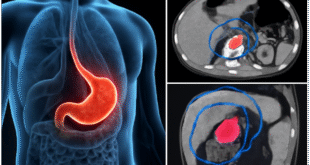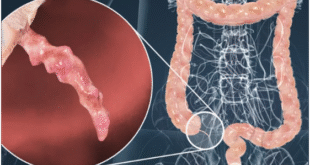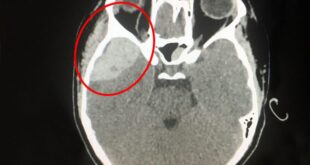![[Tài liệu ]Guyton and Hall Textbook of Medical Physiology 111](https://ykhoa.org/wp-content/uploads/2020/08/111.png)
The first edition of the Textbook of Medical Physiology was
written by Arthur C. Guyton almost 65 years ago. Unlike
most major medical textbooks, which often have 20 or
more authors, the first eight editions of the Textbook of
Medical Physiology were written entirely by Dr. Guyton.
He had a gift for communicating complex ideas in a clear
and interesting manner that made studying physiology
fun. He wrote the book to help students learn physiology,
not to impress his professional colleagues.
Dr. John Hall worked closely with Dr. Guyton for
almost 30 years and had the privilege of writing parts of
the 9th and 10th editions and of assuming sole responsi-
bility for completing the subsequent editions.
Dr. Michael Hall has joined in the preparation of the
14th edition of the Textbook of Medical Physiology. He is
a physician trained in internal medicine, cardiology, and
physiology and has brought new insights that have helped
greatly to achieve the same goal as for previous editions—
to explain, in language easily understood by students, how
the different cells, tissues, and organs of the human body
work together to maintain life.
This task has been challenging and fun because
researchers continue to unravel new mysteries of body
functions. Advances in molecular and cellular physiology
have made it possible to explain some physiology princi-
ples in the terminology of molecular and physical sciences
rather than in merely a series of separate and unexplained
biological phenomena. However, the molecular events
that underpin the functions of the body’s cells provide
only a partial explanation of human physiology. The total
function of the human body requires complex control
systems that communicate with each other and coordi-
nate the molecular functions of the body’s cells, tissues,
and organs in health and disease.
The Textbook of Medical Physiology is not a reference
book that attempts to provide a compendium of the most
recent advances in physiology. It is a book that contin-
ues the tradition of being written for students. It focuses
on the basic principles of physiology needed to begin a
career in the health care professions, such as medicine,
dentistry, and nursing, as well as graduate studies in the
biological and health sciences. It should also be useful
to physicians and health care professionals who wish to
review the basic principles needed for understanding the
pathophysiology of human disease. We have attempted to
maintain the same unified organization of the text that
has been useful to students in the past and to ensure that
the book is comprehensive enough that students will con-
tinue to use it during their professional careers.
Our hope is that the Textbook of Medical Physiology
conveys the majesty of the human body and its many
functions and that it stimulates students to study physiol-
ogy throughout their careers. Physiology links the basic
sciences and medicine. The great beauty of physiology is
that it integrates the individual functions of all the body’s
different cells, tissues, and organs into a functional whole,
the human body. Indeed, the human body is much more
than the sum of its parts, and life relies upon this total
function, not just on the function of individual body parts
in isolation from the others.
This brings us to an important question: How are the
separate organs and systems coordinated to maintain
proper function of the entire body? Fortunately, our bod-
ies are endowed with a vast network of feedback controls
that achieve the necessary balances without which we
would be unable to live. Physiologists call this high level
of internal bodily control homeostasis. In disease states,
functional balances are often seriously disturbed, and
homeostasis is impaired. When even a single disturbance
reaches a limit, the whole body can no longer live. One of
the goals of this text is to emphasize the effectiveness and
beauty of the body’s homeostasis mechanisms as well as
to present their abnormal functions in disease.
Another objective is to be as accurate as possible. Sug-
gestions and critiques from many students, physiologists,
and clinicians throughout the world have checked factual
accuracy as well as balance in the text. Even so, because
of the likelihood of error in sorting through many thou-
sands of bits of information, we issue a further request
for all readers to send notations of error or inaccuracy to
us. Physiologists understand the importance of feedback
for proper function of the human body; feedback is also
important for progressive improvement of a textbook of
physiology. To the many persons who have already helped,
we express sincere thanks. Your feedback has helped to
improve the text.
Preface
viii
Preface
A brief explanation is needed about several features
of the 14th edition. Although many of the chapters have
been revised to include new principles of physiology and
new figures to illustrate these principles, the text length
has been closely monitored to limit the book’s size so
that it can be used effectively in physiology courses for
medical students and health care professionals. New
references have been chosen primarily for their pre-
sentation of physiological principles, for the quality of
their own references, and for their easy accessibility.
The selected bibliography at the end of the chapters lists
mainly review papers from recently published scientific
journals that can be freely accessed from the PubMed site
at https://www.ncbi.nlm.nih.gov/pubmed/. Use of these
references, as well as cross-references from them, pro-
vides much more extensive coverage of the entire field of
physiology.
Our effort to be as concise as possible has, unfortu-
nately, necessitated a more simplified and dogmatic
presentation of many physiological principles than we
normally would have desired. However, the bibliogra-
phy can be used to learn more about the controversies
and unanswered questions that remain in understanding
the complex functions of the human body in health and
disease.
Another feature of the book is that the print is set
in two sizes. The material in large print constitutes the
fundamental physiological information that students
will require in virtually all of their medical studies. The
material in small print and highlighted with a pale lav-
ender background (or identified by beginning and ending
double gray arrowheads in the ebook version) is of several
different kinds: (1) anatomic, chemical, and other infor-
mation that is needed for immediate discussion but that
most students will learn in more detail in other courses;
(2) physiological information of special importance to
certain fields of clinical medicine; and (3) information
that will be of value to those students who wish to study
specific physiological mechanisms more deeply.
The ebook version provides links to additional content
including video animations and self-assessment questions
that can be accessed with computers, smart phones, and
electronic tablets. For additional self-assessment beyond
these textbook supplements, the reader may consider
using a copy of Guyton and Hall Physiology Review, which
includes more than 1000 practice questions referenced to
the textbook. We hope that these ancillary materials will
assist readers in testing their understanding of basic prin-
ciples of physiology.
We express sincere thanks to many persons who have
helped to prepare this book, including our colleagues in
the Department of Physiology and Biophysics at the Uni-
versity of Mississippi Medical Center who provided valu-
able suggestions. The members of our faculty and a brief
description of the research and educational activities of the
department can be found at http://physiology.umc.edu/.
We are especially grateful to Stephanie Lucas for excellent
assistance and to James Perkins for excellent illustrations.
We also thank Elyse O’Grady, Jennifer Shreiner, Grace
Onderlinde, Rebecca Gruliow, and the entire Elsevier
team for continued editorial and production excellence.
Finally, we thank the many readers who continue to
help us improve the Textbook of Medical Physiology. We
hope that you enjoy the current edition and find it even
more useful than previous editions.
 Y khoa Diễn đàn Y khoa, y tế sức khoẻ, kiến thức lâm sàng, chẩn đoán và điều trị, phác đồ, diễn đàn y khoa, hệ sinh thái y khoa online, mới nhất và đáng tin cậy.
Y khoa Diễn đàn Y khoa, y tế sức khoẻ, kiến thức lâm sàng, chẩn đoán và điều trị, phác đồ, diễn đàn y khoa, hệ sinh thái y khoa online, mới nhất và đáng tin cậy.






